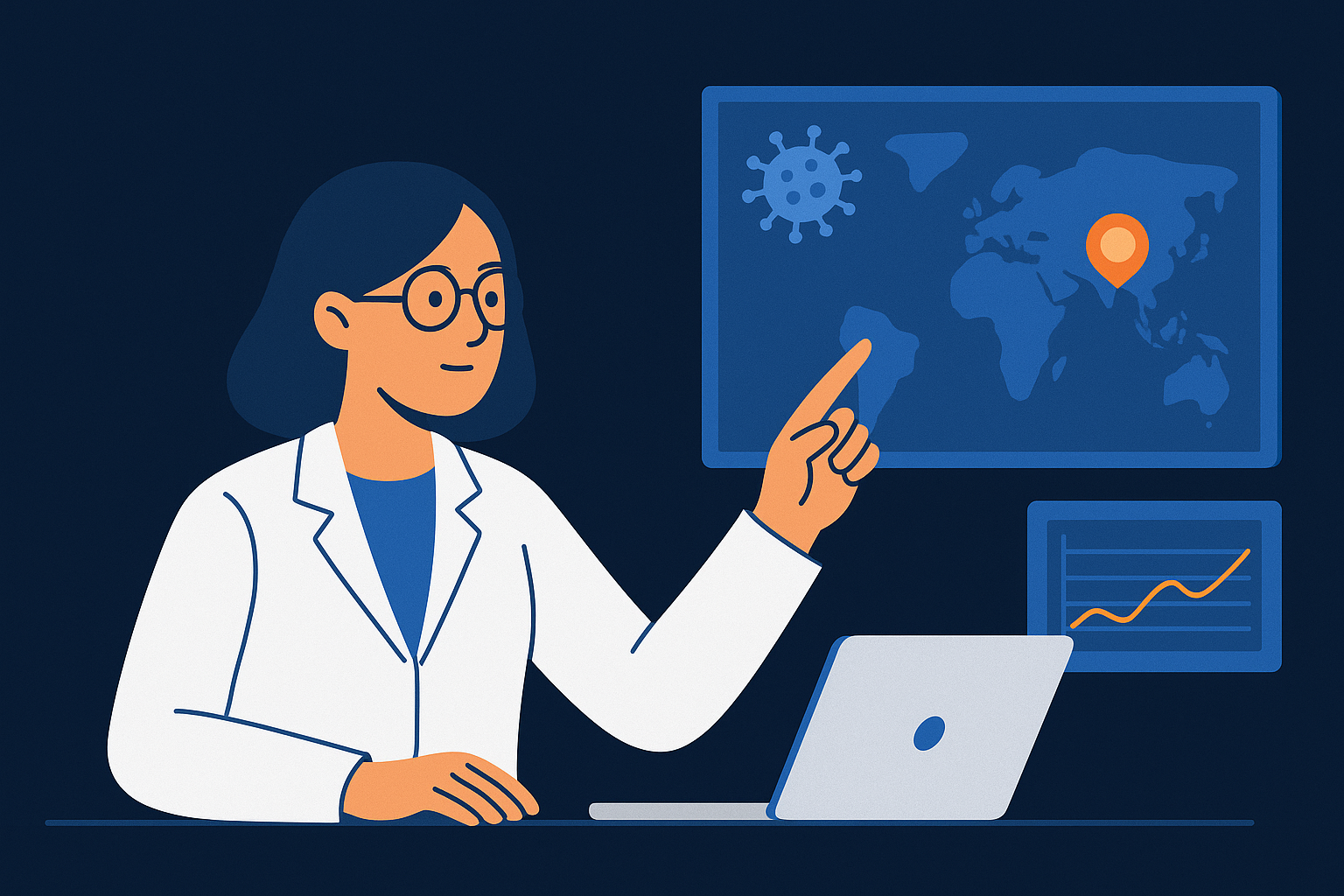How we helped a leading pharmaceutical company create an AI-driven platform that detects viral outbreaks before they become headlines.
By the time a virus makes the news, it's often too late. Healthcare systems, governments, and businesses need real-time intelligence to see outbreaks forming; not weeks after the fact. That's why a clinical-stage pharmaceutical company focused on anti-infective treatments partnered with Quantiva to build an AI-powered early warning system that could detect viral hotspots as they emerge.

The Challenge: Finding Signals in the Noise
Traditional disease surveillance waits for hospital admissions and CDC reports. By then, community transmission is already widespread. The real signals emerge earlier; in pharmacy purchases, social media symptom mentions, and movement patterns. But these disparate data streams mean nothing individually. The challenge: process millions of daily data points while protecting privacy and delivering predictions fast enough to be actionable.
Building Intelligence at Scale
We designed a multi-layered platform pulling from diverse sources: CDC data, ClinicalTrials.gov, hospitals, insurance claims, pharmacy sales, PubMed, and social networks like Facebook, Twitter, and Instagram. Using blockchain-based anonymization, we ensured population-level insights without exposing individual identities.
The core innovation was teaching the system to recognize subtle patterns preceding outbreaks. Our proprietary AI analysis identifies and correlates critical cause-and-effect relationships between previously unconnected variables, surfacing disease and outbreak trends before they become visible through traditional channels.
From Concept...To Impact
Working under urgent conditions, we compressed what would typically be a multi-year development cycle into months. The platform needed to handle immediate threats while remaining flexible enough for future challenges.
Key Capabilities:
- Real-time identification of infection hot zones
- Predictive algorithms for future outbreak locations
- Continuous ingestion of massive datasets across public and private sources
- Trustless blockchain-protected data anonymization
- Interactive visualization tools revealing cause-and-effect relationships
The system's adaptability proved invaluable, expanding beyond initial viral threats to monitor influenza, other infectious diseases like Ebola and Marburg, and even opioid-related events.
The Platform Advantage
This project demonstrates how modern AI infrastructure transforms public health response. By continuously analyzing huge amounts of data from diverse sources, the platform provides health security stakeholders (healthcare systems, health agencies, insurance companies, and NGOs) with the predictive intelligence they need to mobilize prevention and treatment resources before crises emerge.
Takeaway
In the modern world, data infrastructure IS health infrastructure. The ability to rapidly analyze diverse data streams means the difference between contained outbreaks and global crises. By combining AI expertise with real-time identity resolution and pattern inference from disparate datasets, we helped create a system that doesn't just track disease, it helps prevent it from spreading.
At Quantiva, we believe AI's value isn't replacing human judgment but augmenting it in order to provide professionals the intelligence to save lives.
👉 Ready to build predictive intelligence for your critical systems? Contact Us
See you next month with more innovations, insights and business technology spotlights in our next edition of the Quantiva Quorum.



